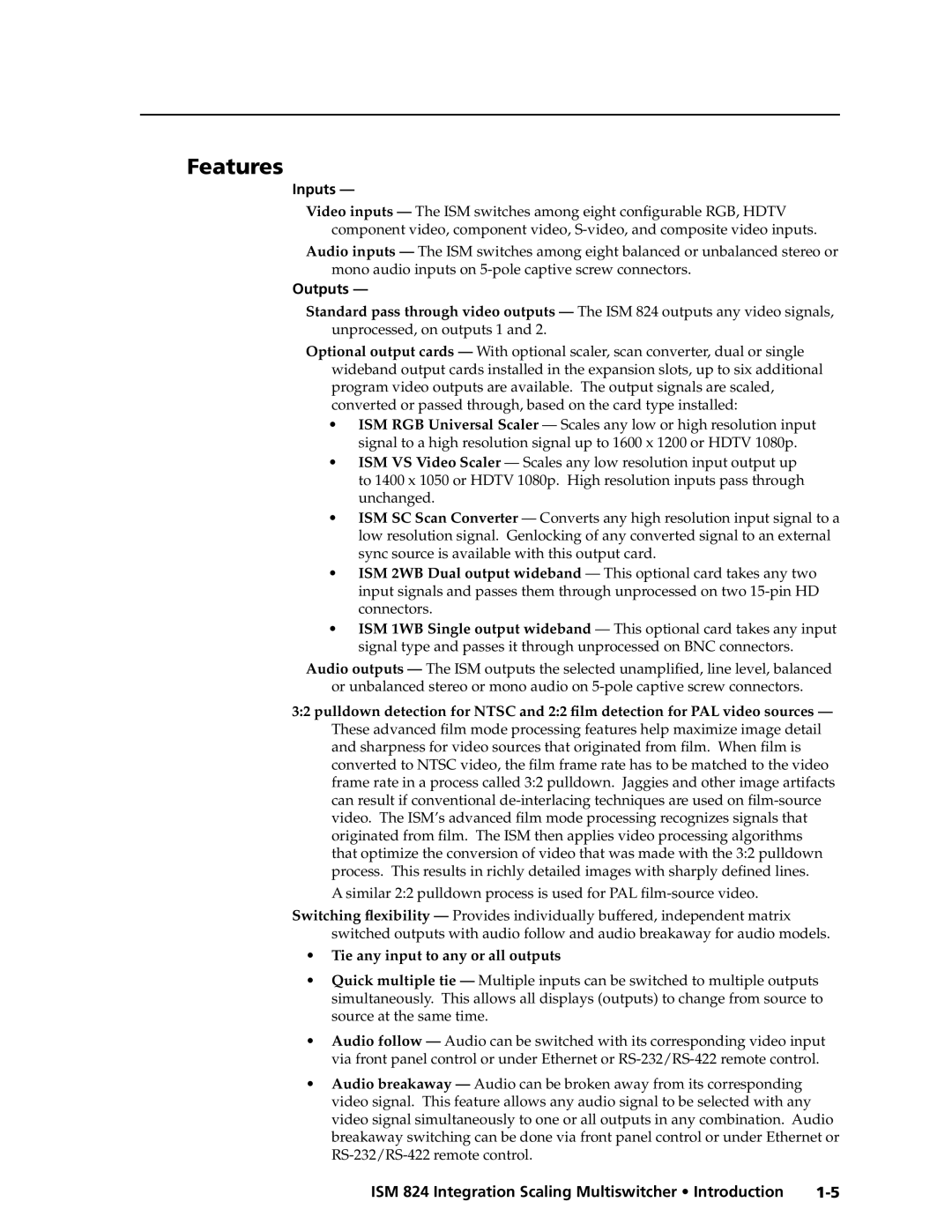Features
Inputs —
Video inputs — The ISM switches among eight configurable RGB, HDTV component video, component video,
Audio inputs — The ISM switches among eight balanced or unbalanced stereo or mono audio inputs on
Outputs —
Standard pass through video outputs — The ISM 824 outputs any video signals, unprocessed, on outputs 1 and 2.
Optional output cards — With optional scaler, scan converter, dual or single wideband output cards installed in the expansion slots, up to six additional program video outputs are available. The output signals are scaled, converted or passed through, based on the card type installed:
•ISM RGB Universal Scaler — Scales any low or high resolution input signal to a high resolution signal up to 1600 x 1200 or HDTV 1080p.
•ISM VS Video Scaler — Scales any low resolution input output up to 1400 x 1050 or HDTV 1080p. High resolution inputs pass through unchanged.
•ISM SC Scan Converter — Converts any high resolution input signal to a low resolution signal. Genlocking of any converted signal to an external sync source is available with this output card.
•ISM 2WB Dual output wideband — This optional card takes any two input signals and passes them through unprocessed on two
•ISM 1WB Single output wideband — This optional card takes any input signal type and passes it through unprocessed on BNC connectors.
Audio outputs — The ISM outputs the selected unamplified, line level, balanced or unbalanced stereo or mono audio on
3:2 pulldown detection for NTSC and 2:2 film detection for PAL video sources —
These advanced film mode processing features help maximize image detail
and sharpness for video sources that originated from film. When film is
converted to NTSC video, the film frame rate has to be matched to the video frame rate in a process called 3:2 pulldown. Jaggies and other image artifacts can result if conventional
A similar 2:2 pulldown process is used for PAL
Switching flexibility — Provides individually buffered, independent matrix switched outputs with audio follow and audio breakaway for audio models.
•Tie any input to any or all outputs
•Quick multiple tie — Multiple inputs can be switched to multiple outputs simultaneously. This allows all displays (outputs) to change from source to source at the same time.
•Audio follow — Audio can be switched with its corresponding video input via front panel control or under Ethernet or
•Audio breakaway — Audio can be broken away from its corresponding video signal. This feature allows any audio signal to be selected with any video signal simultaneously to one or all outputs in any combination. Audio breakaway switching can be done via front panel control or under Ethernet or
ISM 824 Integration Scaling Multiswitcher • Introduction |
